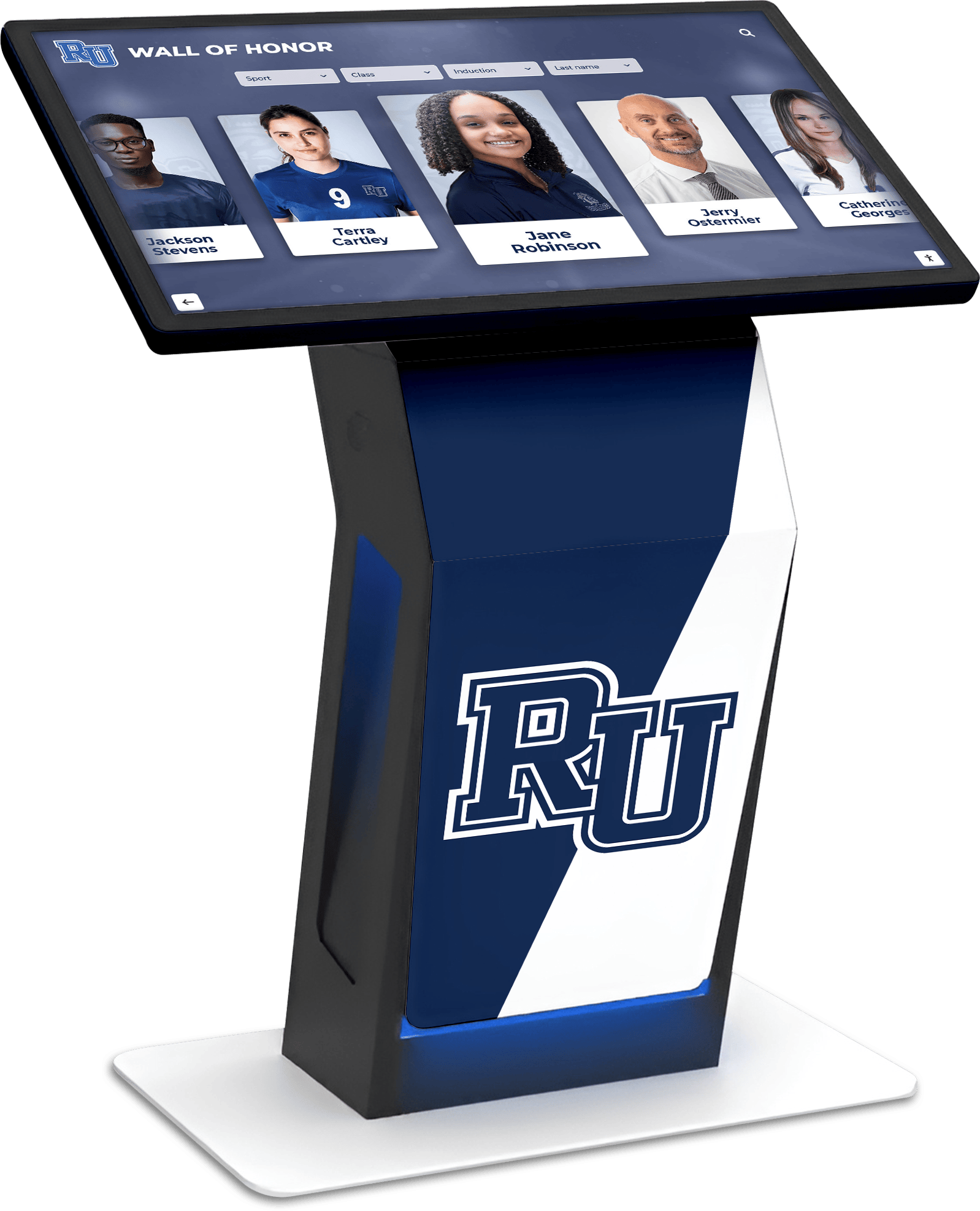
Digital Tools That Help Bring History to Life: Complete Guide for Schools & Museums (2025)
**Intent: Compare** — Educational institutions and cultural organizations face an exciting challenge: how to transform static historical content into dynamic, engaging experiences that resonate with digital-native students and visitors. Modern digital tools have revolutionized history education by making the past interactive, accessible, and memorable through touchscreen displays, virtual reality experiences, digital archives, and recognition platforms. This comprehensive guide evaluates the most effective digital solutions for bringing history to life, examining interactive museum exhibits, educational software platforms, virtual tour technologies, and purpose-built recognition displays. Schools, universities, museums, and historical societies need structured frameworks to select tools that enhance engagement, support diverse learning styles, and preserve institutional heritage while meeting accessibility requirements and budget constraints. Why Digital History Tools Matter Now The landscape of history education has transformed dramatically over the past decade. Students who grew up with smartphones, tablets, and interactive media expect engaging, hands-on learning experiences rather than passive consumption of textual information. According to research on interactive history learning tools, digital platforms make history interactive, engaging, and more accessible to diverse learning styles while equipping students with critical thinking, collaboration, and research skills.
Read More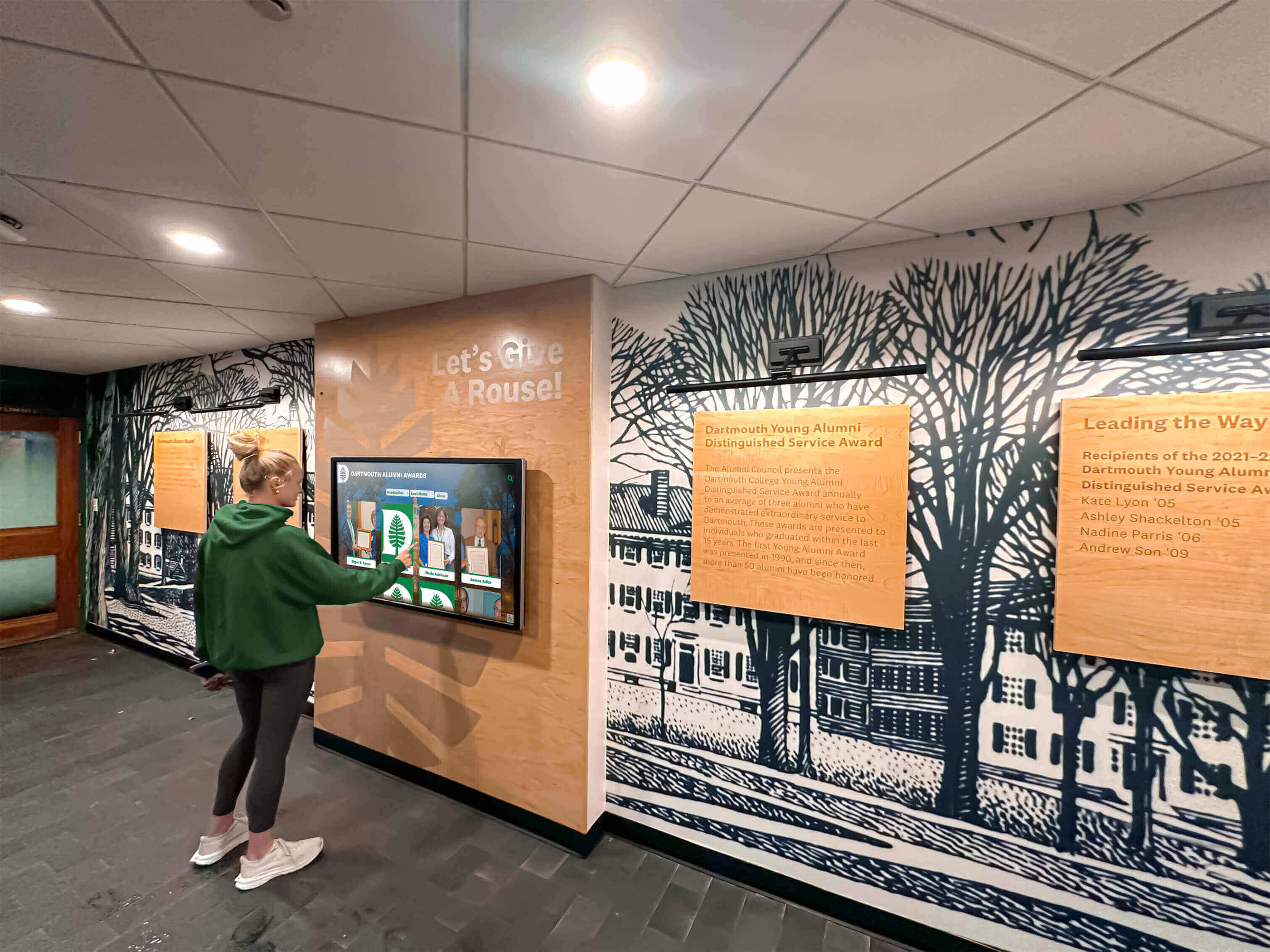
CTE Program Digital Touchscreen Display: Complete Recognition Guide for Career & Technical Education
Career and Technical Education (CTE) programs prepare students for high-demand careers through hands-on learning in fields like healthcare, information technology, manufacturing, construction, and more. As these programs grow in importance and scale, showcasing student achievements, industry certifications, and career pathways through digital touchscreen displays has become essential for program visibility, student motivation, and community engagement. This comprehensive guide explores how CTE programs can leverage modern digital recognition displays to celebrate student success while demonstrating program value to stakeholders. Career and Technical Education has emerged as a critical pathway for preparing students for the modern workforce. Recent research shows that 80 percent of students taking rigorous CTE coursework met college and career readiness goals, compared to just 63 percent of students who did not take CTE. With graduation rates for CTE concentrators reaching 90 percent nationally compared to 75 percent for other students, according to data from the National Center for Education Statistics, the value of these programs is clear.
Read More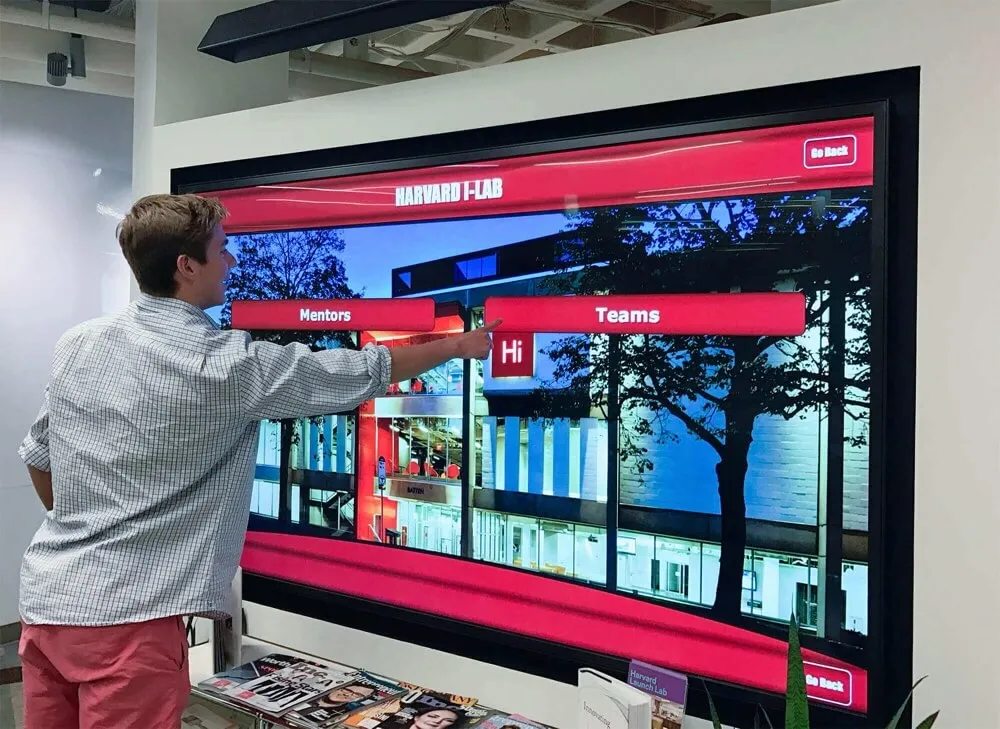
Types of Screens Used for Digital Signage: Complete 2025 Guide to Display Technology for Schools and Institutions
Selecting the right screens for digital signage projects determines whether installations deliver clear, engaging content or become frustrating investments that underperform expectations. From LCD panels dominating indoor installations to LED walls commanding outdoor spaces, understanding different screen technologies helps institutions make informed decisions aligned with specific applications, budgets, and long-term goals. This comprehensive guide examines all major screen types used in digital signage applications, exploring the technical specifications, advantages, limitations, and ideal use cases for each technology. Whether you’re implementing recognition displays in school hallways, wayfinding systems in campus buildings, or outdoor messaging boards, choosing appropriate screen technology proves critical for success.
Read More
Historical Timeline Touchscreen: Complete Guide to Hardware Evolution & Implementation
Historical timeline touchscreen displays represent a powerful convergence of technological innovation and educational storytelling, transforming how schools, museums, and institutions present chronological information to visitors. These interactive systems engage audiences in ways traditional static displays cannot match, enabling exploration of historical narratives through intuitive touch interfaces that have evolved dramatically since the first touchscreen technology emerged in 1965. Understanding both the fascinating hardware evolution that made modern touchscreens possible and the practical implementation strategies for creating timeline displays helps institutions leverage this technology effectively. This comprehensive guide explores the complete history of touchscreen hardware development while providing actionable guidance for implementing historical timeline displays using modern solutions designed specifically for educational environments. The Evolution of Touchscreen Technology: A Historical Timeline Before exploring how to implement historical timeline touchscreen displays, understanding the remarkable technological journey that made them possible provides valuable context for appreciating these sophisticated systems.
Read More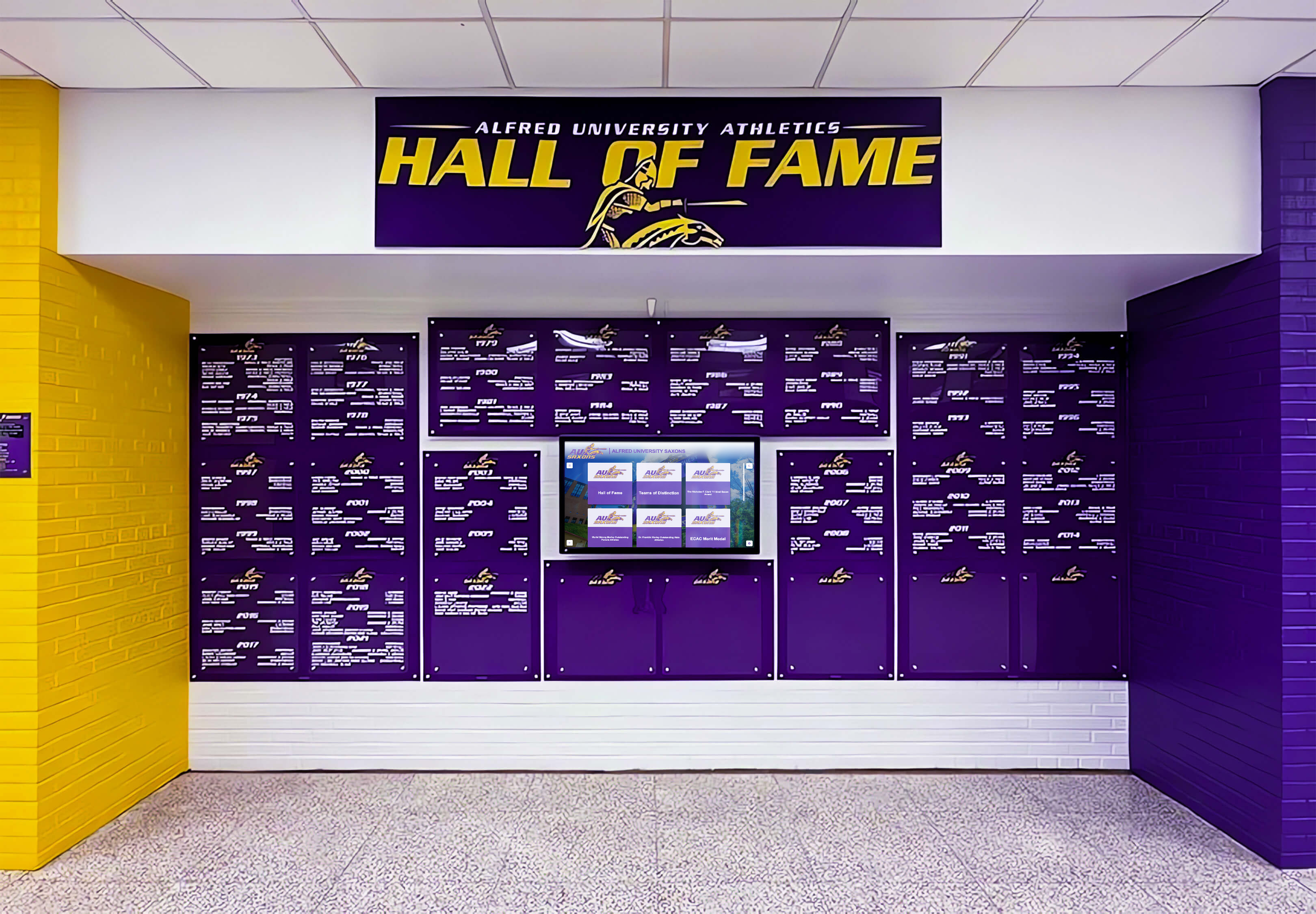
Division II Athletics Digital Recognition System: Complete Guide to Celebrating Student-Athletes
Division II athletics programs serve over 300 member institutions nationwide, supporting nearly 120,000 student-athletes who balance competitive athletics with rigorous academic pursuits and meaningful community engagement. These programs represent a unique space in collegiate sports where championship-level competition meets comprehensive personal development, where athletic excellence pairs with academic achievement, and where institutional resources require strategic investment decisions that maximize impact. As Division II programs navigate this distinctive environment, digital recognition systems have emerged as powerful tools for celebrating student-athletes, enhancing recruiting efforts, preserving program history, and strengthening alumni connections—all while respecting budget constraints that characterize Division II athletics. Understanding the Division II Athletics Environment Division II athletics occupies a distinctive position in the collegiate sports landscape, requiring recognition solutions that address its unique characteristics, values, and resource realities.
Read More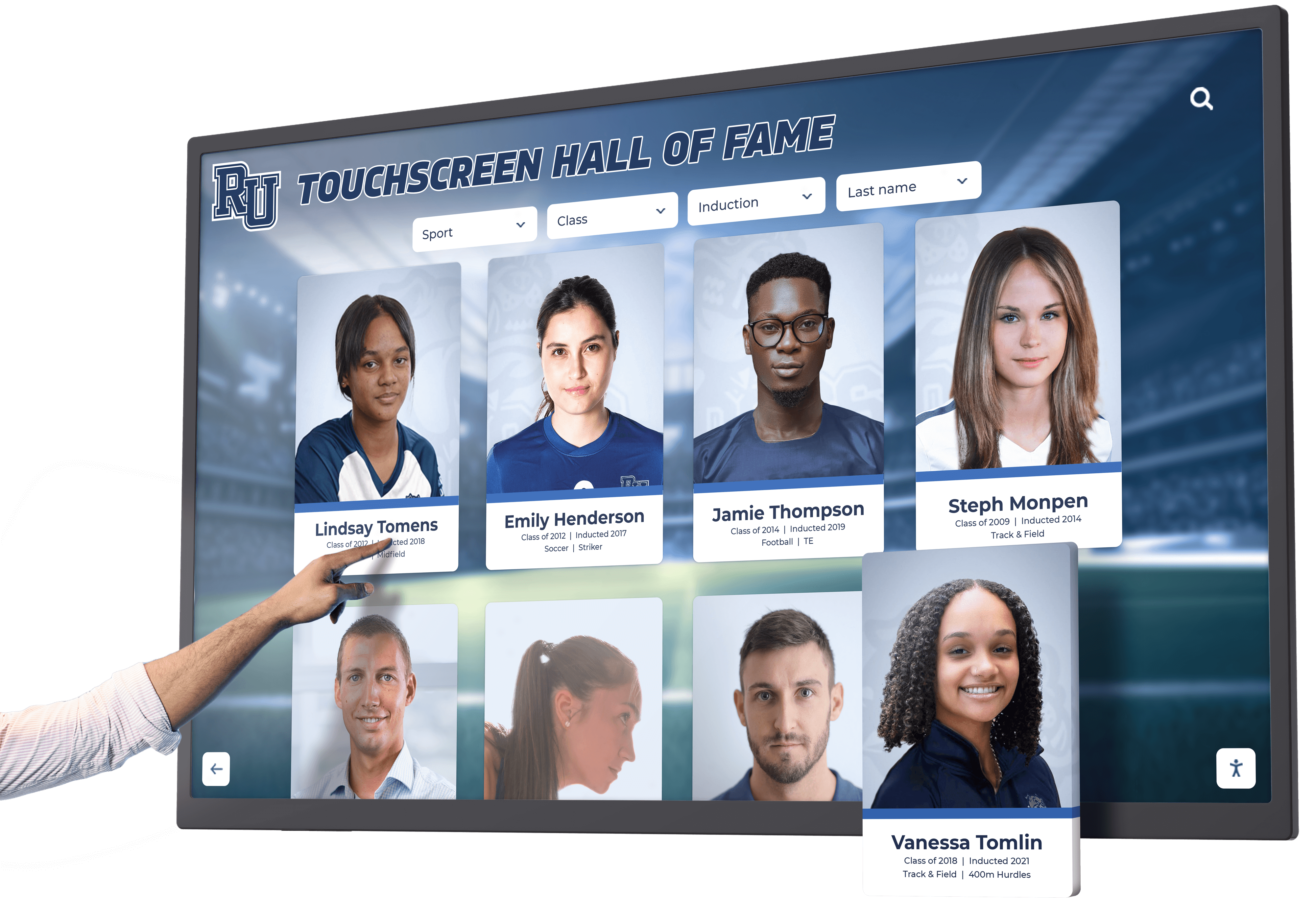
Ballpark Village Interactive Museum: Complete Guide to Modern Sports Recognition and Fan Engagement
The traditional sports museum—static displays behind glass, aging photographs on walls, dusty trophies in locked cases—no longer captivates modern audiences accustomed to interactive digital experiences in every aspect of life. Today's ballpark village interactive museums represent the evolution of sports recognition and fan engagement, transforming how teams celebrate heritage, honor legendary athletes, and create memorable experiences that strengthen community connections. These cutting-edge facilities blend physical and digital storytelling, utilizing touchscreen technology, immersive displays, and multimedia content to make sports history come alive for visitors of all ages. This comprehensive guide explores what makes ballpark village interactive museums successful, the technology powering these engaging spaces, implementation strategies for sports venues at every level, and how similar solutions create powerful recognition experiences for schools, universities, and athletic organizations nationwide. Understanding the Ballpark Village Interactive Museum Concept Before exploring specific technologies and implementation strategies, understanding the evolution and strategic value of interactive sports museums provides essential context for planning successful installations.
Read More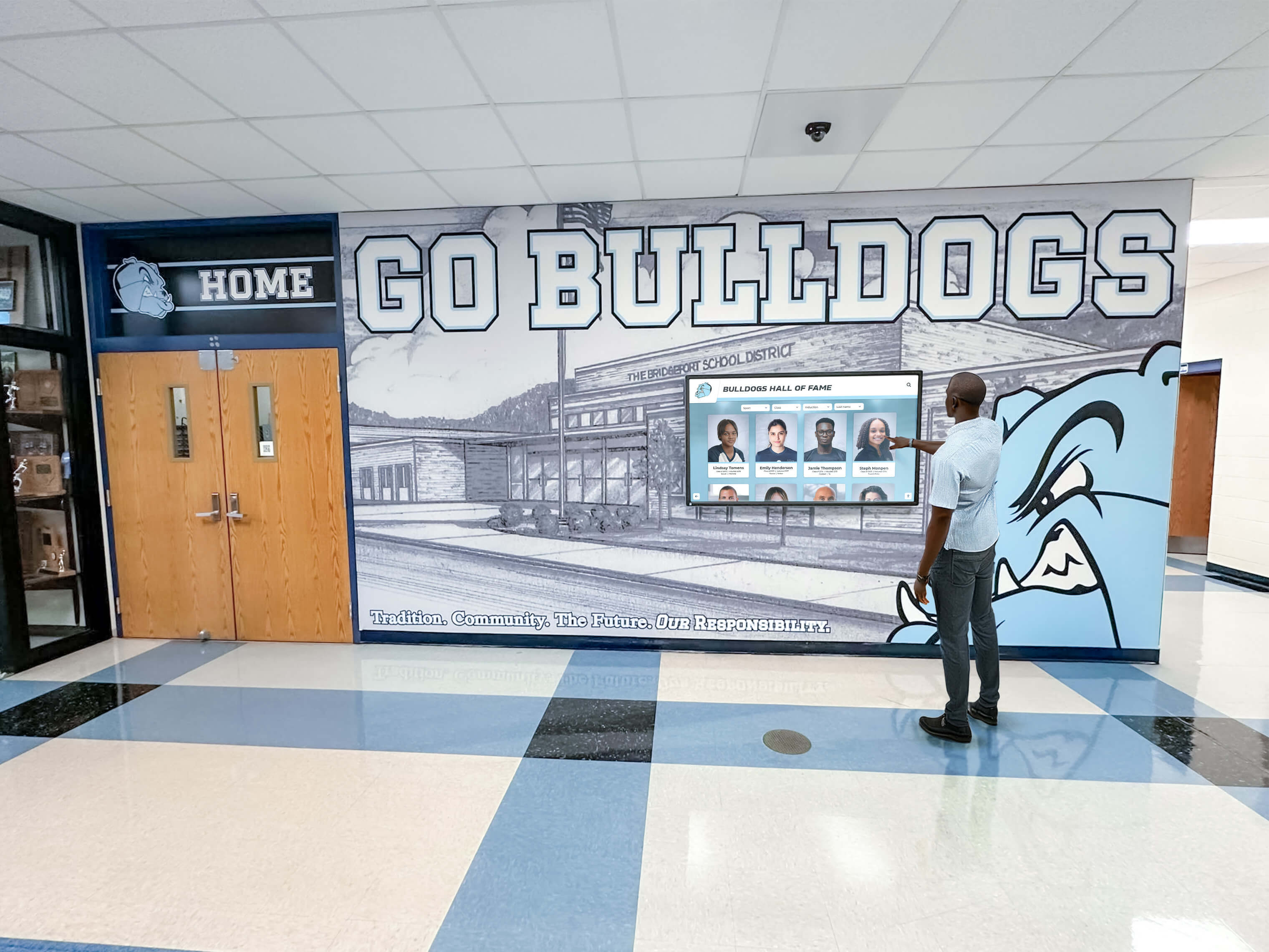
How to Train Staff on Digital Recognition Display Systems: Complete 2025 Guide
Schools and organizations investing in digital recognition displays often focus intensely on hardware selection, software features, and initial content creation—while inadvertently overlooking the most critical factor determining long-term success: comprehensive staff training. Without proper training, even the most sophisticated digital recognition systems underperform, sitting idle or displaying outdated content because staff members lack confidence, knowledge, or skills to manage these systems effectively. The consequences of inadequate training extend far beyond technical frustration. Organizations experience recognition program abandonment within months, wasted technology investments sitting unused in hallways, staff resistance to digital initiatives creating cultural barriers, missed recognition opportunities damaging morale, and dependence on single individuals creating vulnerability when personnel changes occur. These challenges stem not from technology limitations but from insufficient attention to the human element of digital transformation.
Read More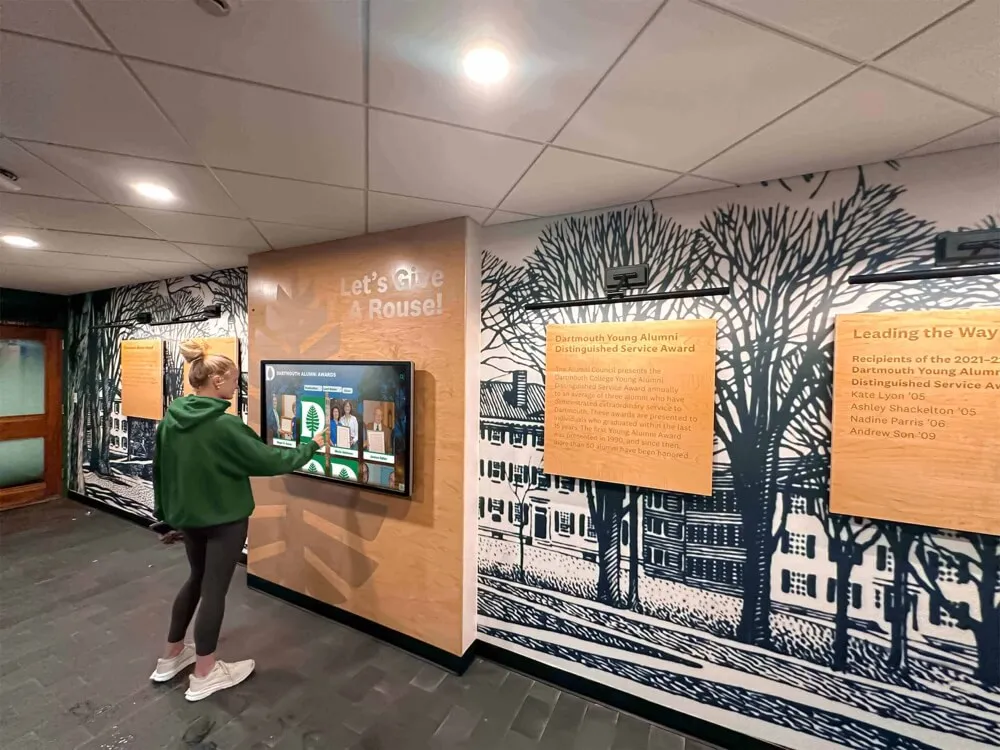
High School Touchscreen for Admissions Tours: Complete Guide to Interactive Campus Experience Technology 2025
First impressions shape enrollment decisions. When prospective students and families arrive for admissions tours, the experiences they encounter during those critical first hours on campus profoundly influence whether your school becomes their top choice or just another option in a competitive field. Traditional paper brochures and staff-led presentations, while valuable, no longer meet the expectations of digitally-native families who expect interactive, personalized experiences across all aspects of their lives—including the high-stakes process of selecting the right educational environment for their children. High school touchscreen technology transforms admissions tours from passive information sessions into engaging, interactive experiences that showcase your institution’s commitment to innovation while providing comprehensive information that addresses every family’s unique questions and concerns. From interactive wayfinding helping families navigate sprawling campuses independently to digital recognition displays demonstrating student achievement culture, touchscreen solutions create memorable impressions that differentiate your school in an increasingly competitive enrollment landscape.
Read More
Digital Hall of Fame Touchscreen: Complete Guide to Interactive Recognition Displays
Recognition has evolved dramatically in the digital age. Traditional trophy cases, plaques, and static wall displays—once the standard for honoring achievements—now compete with interactive technologies that transform how institutions celebrate excellence and engage their communities. Digital hall of fame touchscreen displays represent this evolution, combining the permanence of institutional recognition with the engagement capabilities of modern technology. These systems are revolutionizing how schools, universities, athletic programs, and organizations showcase achievements while creating meaningful connections between past honorees and current community members. Whether you’re an administrator exploring recognition modernization, a committee member evaluating display options, or a decision-maker assessing technology investments, this comprehensive guide provides everything you need to understand digital hall of fame touchscreen systems—from fundamental concepts and key benefits to implementation strategies and best practices for maximizing long-term value.
Read More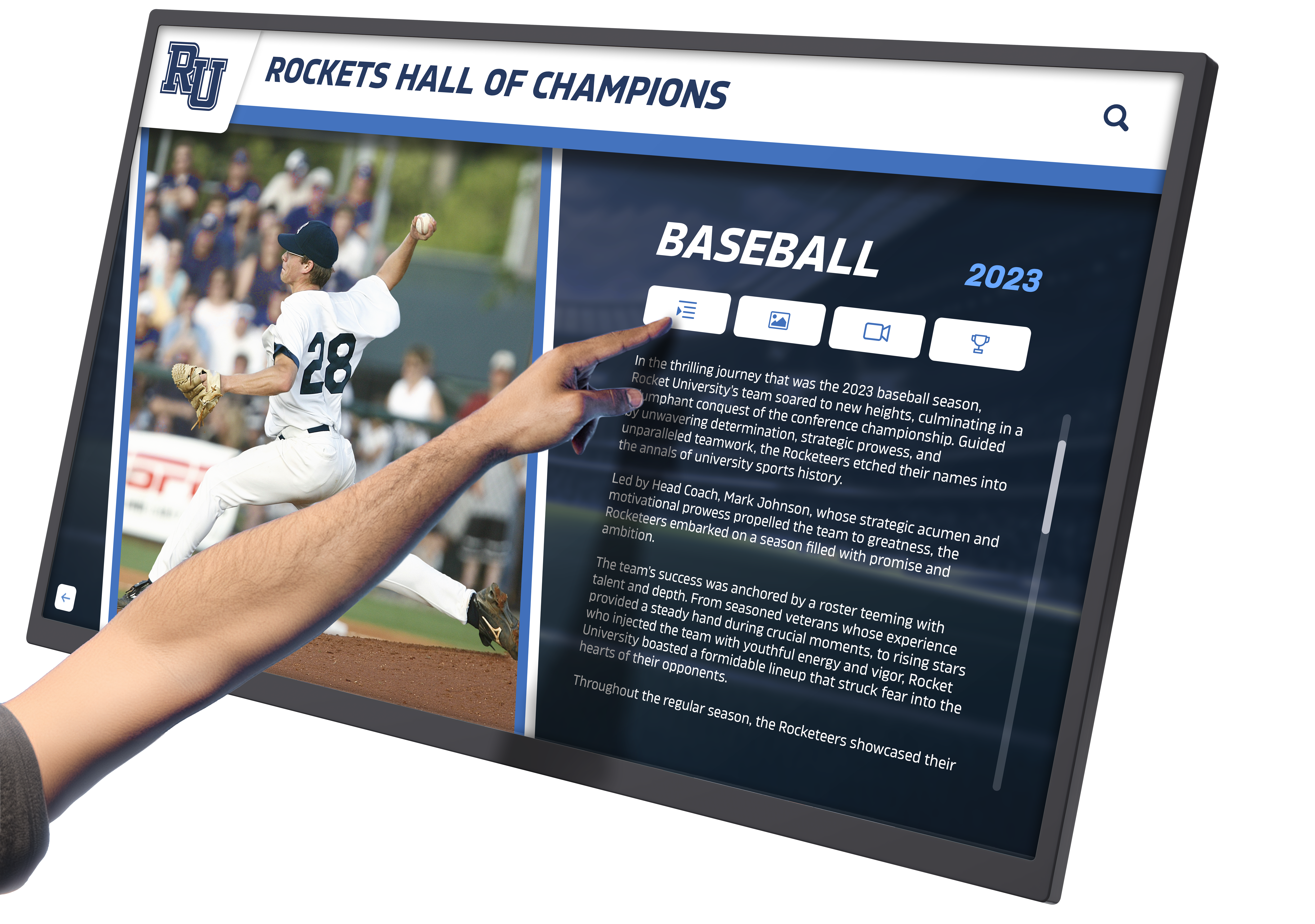
Touch Wall for High Schools: Complete Guide to Interactive Recognition Displays 2025
High schools face a persistent challenge: how to meaningfully recognize student achievements when traditional trophy cases overflow, wall space runs out, and static plaques fail to capture the attention of digitally native students. Enter the touch wall—an interactive touchscreen display that transforms how schools celebrate excellence, preserve history, and engage their communities.
Read More
New England Patriots Rocket Touchscreen: Interactive Recognition Solutions for NFL Excellence
The New England Patriots stand as one of the NFL's most storied franchises, with six Super Bowl championships and a legacy of legendary players who transformed professional football. As sports recognition evolves, interactive touchscreen technology is revolutionizing how teams like the Patriots celebrate their history, engage fans, and preserve the achievements of franchise legends. Rocket touchscreen solutions represent the cutting edge of this transformation—providing NFL teams, athletic facilities, and sports organizations with powerful digital platforms that showcase unlimited achievements, create immersive fan experiences, and maintain living histories that grow with franchises. This comprehensive guide explores how Rocket Alumni Solutions touchscreen technology serves professional football recognition, the benefits of interactive digital displays for NFL teams and athletic programs, and why modern recognition systems are becoming essential for celebrating sports excellence in ways that static displays simply cannot match. The Evolution of NFL Recognition: From Trophy Cases to Interactive Touchscreens Professional football recognition has undergone dramatic transformation over the past two decades, evolving from space-constrained trophy cases and static plaques to sophisticated interactive digital systems that engage modern audiences while preserving comprehensive team histories.
Read More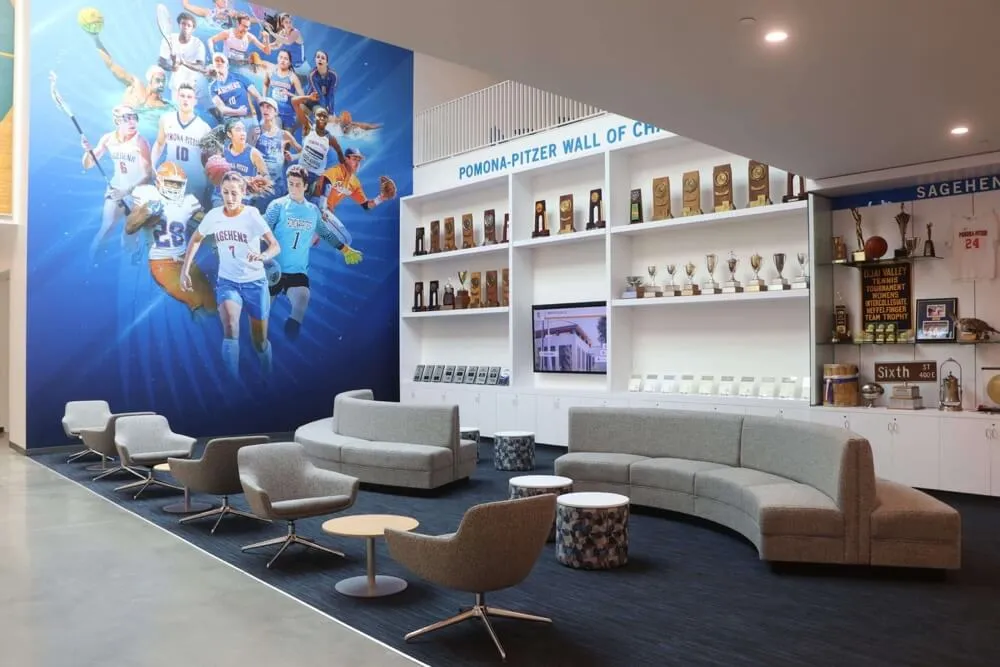
Massachusetts High School Hockey Touchscreen Recognition: Complete Guide to Digital Displays
Massachusetts high school hockey represents one of America's most competitive and storied athletic traditions, with programs across the Commonwealth producing Division I college players, professional athletes, and countless championship moments worthy of permanent recognition. From historic Boston-area programs to emerging central Massachusetts powers, Bay State hockey programs build legacies spanning decades—achievements that deserve celebration matching their significance. Modern touchscreen recognition displays transform how Massachusetts schools honor hockey excellence, creating interactive experiences that engage current students, inspire future players, and preserve program history through technology specifically designed for comprehensive athletic recognition. Massachusetts High School Hockey: A Tradition of Excellence Understanding the depth of Massachusetts hockey tradition provides context for why comprehensive recognition matters so profoundly to Bay State programs.
Read More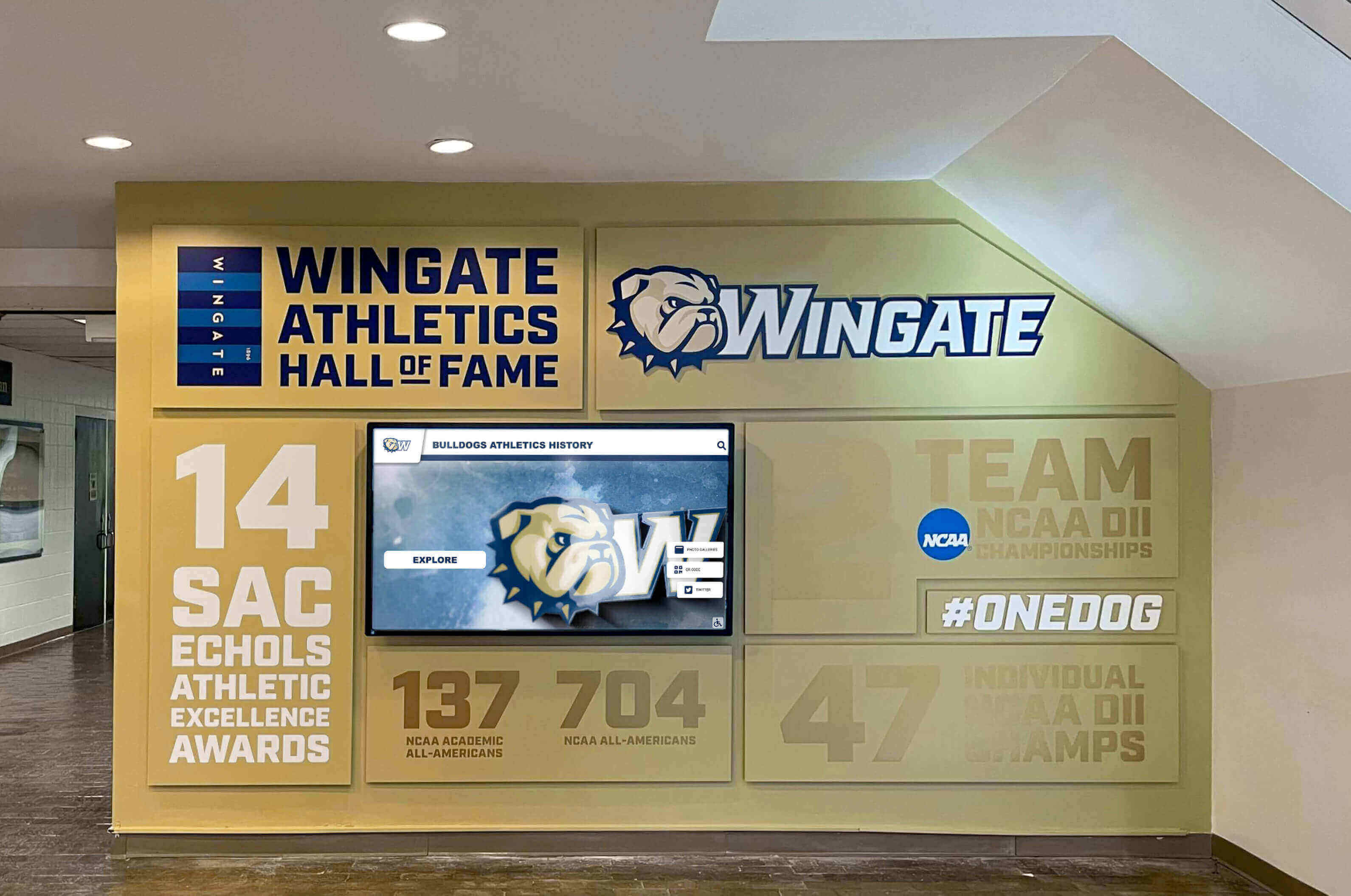
Alumni Legacy Digital Wall: Complete Guide to Honoring Distinguished Graduates with Interactive Recognition in 2025
An alumni legacy digital wall represents the modern evolution of graduate recognition, transforming how institutions honor distinguished alumni while preserving their stories for future generations. Unlike traditional static plaques that provide minimal information and consume valuable wall space, digital legacy walls combine interactive touchscreen technology with multimedia storytelling capabilities to create engaging recognition experiences that inspire current students, strengthen alumni connections, and build lasting institutional pride. Whether you're considering your first digital recognition system or upgrading existing displays, this comprehensive guide explores everything you need to know about alumni legacy digital walls—from understanding their transformative benefits and key features to implementation strategies, content development, and maximizing long-term impact for your school, university, or organization. What is an Alumni Legacy Digital Wall? An alumni legacy digital wall is an interactive recognition system that showcases distinguished graduates through engaging digital displays featuring comprehensive biographical profiles, multimedia content, and intuitive navigation capabilities. These modern recognition platforms replace or complement traditional plaques and photo boards with dynamic touchscreen interfaces that tell rich, compelling stories about alumni achievements while making this information easily accessible to visitors, current students, and the broader community.
Read More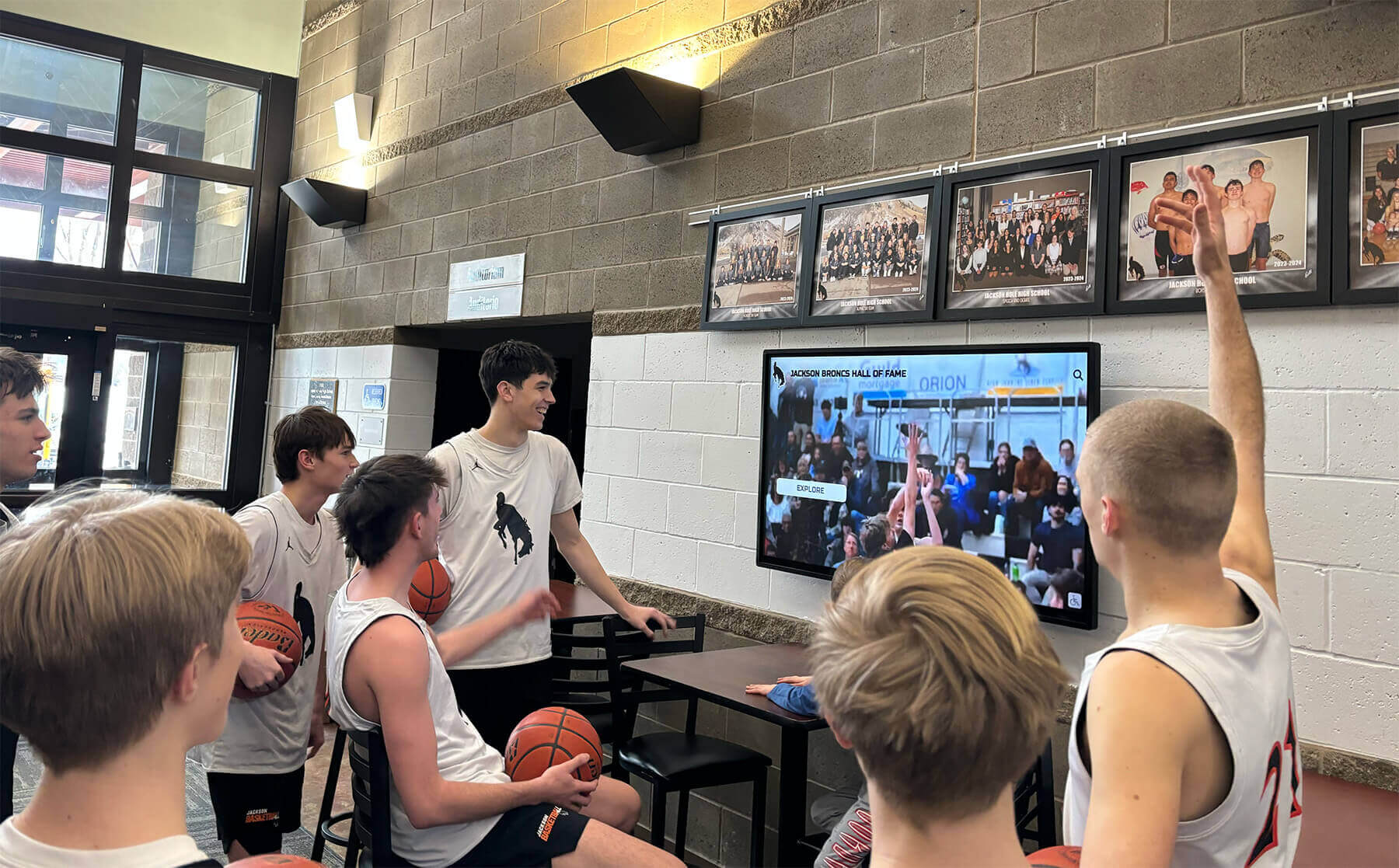
Fun School Screen: Complete Guide to Interactive Touchscreen Displays That Boost Student Engagement 2025
Walk through any modern school hallway and you’ll likely encounter students gathered around a glowing screen, tapping, swiping, and exploring content with genuine interest. These “fun school screens”—interactive touchscreen displays designed specifically for educational environments—represent far more than digital bulletin boards. They’re engagement engines that transform passive spaces into interactive learning environments while celebrating achievement, sharing information, and building school culture in ways traditional displays never could.
Read More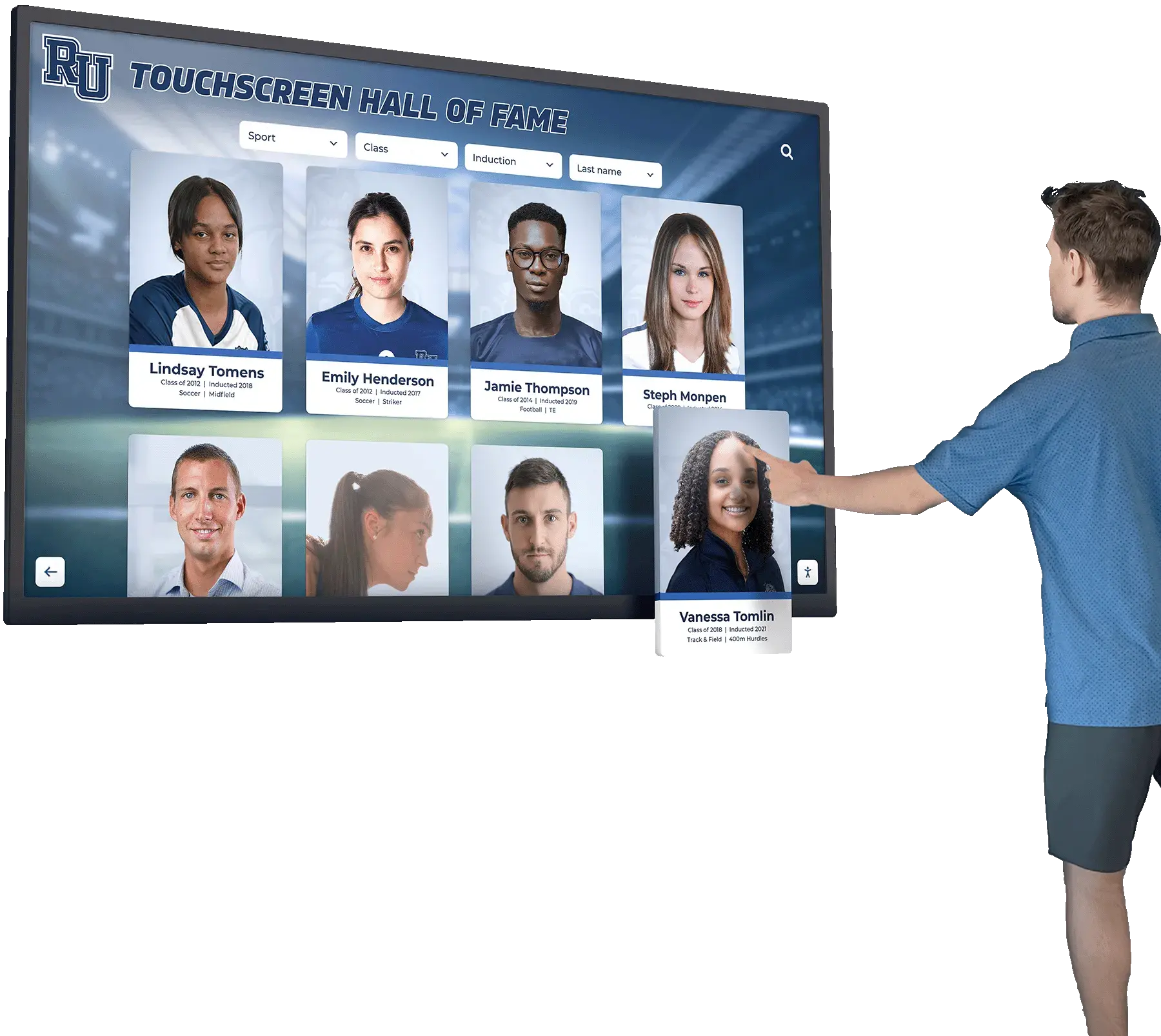
How Digital Displays Inspire Alumni to Give Back: Transform Recognition Into Lasting Impact
Alumni fundraising has become increasingly challenging for educational institutions, with donor retention rates averaging only 43% nationwide. Yet schools and universities implementing strategic digital recognition displays report remarkable transformations—15-25% increases in alumni giving participation, higher average gift sizes, and significantly improved donor retention. The difference isn't just technology—it's how these institutions leverage interactive displays to create emotional connections that inspire generous, sustained philanthropic support. This comprehensive guide reveals exactly how digital recognition displays transform passive acknowledgment into powerful giving motivation, with proven strategies you can implement to dramatically improve your institution's alumni fundraising outcomes. The Alumni Giving Challenge Facing Educational Institutions Educational institutions depend heavily on alumni philanthropy to fund scholarships, support facilities, enhance programs, and maintain competitive excellence. However, cultivating sustained alumni giving has grown increasingly difficult in an era of competing priorities, digital distraction, and evolving donor expectations.
Read More
ViewSonic Hall of Fame Displays: Complete Guide to Digital Recognition Solutions
ViewSonic has established itself as a leading manufacturer of professional display technology, and their products have become increasingly popular for digital hall of fame installations across schools, universities, and organizations. When choosing hardware for interactive recognition displays, the display panel forms the foundation of the user experience—affecting everything from visual quality and touchscreen responsiveness to long-term reliability and total cost of ownership. This comprehensive guide explores how ViewSonic displays serve hall of fame applications, covering display selection criteria, technical specifications that matter most for recognition programs, installation best practices, and how to maximize your investment in ViewSonic display technology. Whether you're planning your first digital recognition installation or upgrading existing systems, understanding ViewSonic's display offerings helps ensure you select solutions that deliver engaging experiences while supporting your long-term program goals. Understanding ViewSonic Display Technology Before diving into specific hall of fame applications, understanding ViewSonic’s position in the professional display market and their technology approach provides context for evaluating their products for recognition installations.
Read More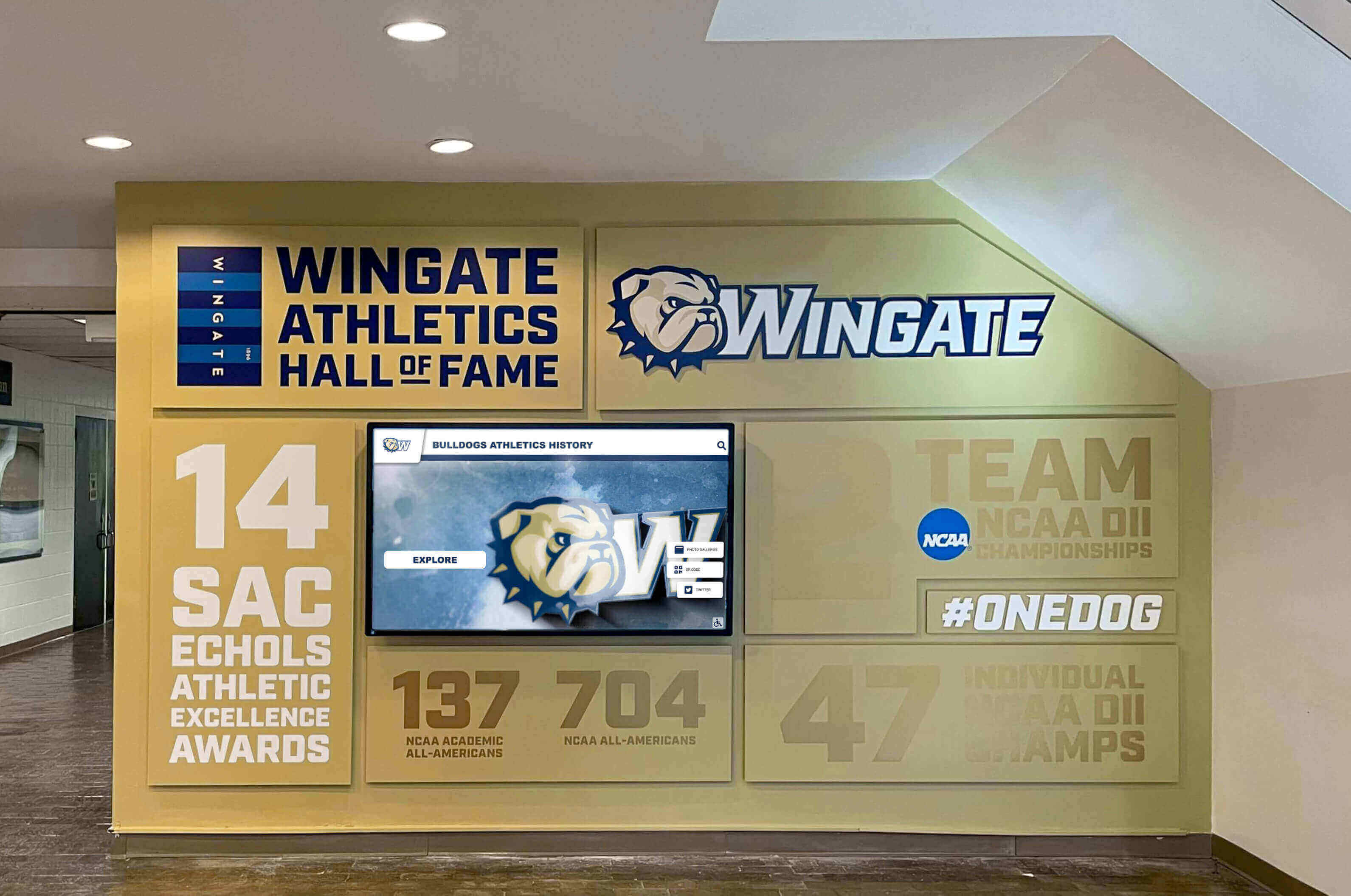
Digital Alumni Hall of Fame Experience: Transform How You Honor Graduates
The digital alumni hall of fame experience represents a transformative shift in how educational institutions celebrate their graduates. Unlike traditional static plaques that gather dust in forgotten hallways, modern digital recognition creates immersive, interactive experiences that engage visitors, honor alumni achievements, and strengthen institutional pride. This comprehensive guide explores how schools, colleges, and universities are leveraging cutting-edge touchscreen technology to create memorable recognition experiences that resonate with contemporary audiences while preserving institutional history for future generations. Understanding the Digital Alumni Hall of Fame Experience A digital alumni hall of fame experience goes far beyond simply displaying names on a screen. It’s a comprehensive recognition ecosystem that combines hardware, software, content, and thoughtful design to create meaningful interactions between visitors and alumni stories.
Read More
Digital Record Boards: The Perfect Solution for Displaying and Recognizing School Records
School record boards serve a vital purpose: they celebrate excellence, inspire current students to pursue their own achievements, and preserve institutional history for future generations. But traditional physical record boards—whether engraved plaques, printed displays, or painted gymnasium walls—struggle with limited space, difficult updates, and maintenance challenges that make comprehensive recognition increasingly difficult. Digital record boards provide the perfect solution, transforming how schools display and recognize achievements through unlimited capacity, instant updates, engaging multimedia content, and maintenance-free operation. This comprehensive guide explores why digital record boards represent the ideal modern recognition solution for schools seeking to celebrate student success comprehensively while simplifying management and reducing long-term costs. The Perfect Solution: Why Digital Record Boards Excel Digital record boards address every limitation of traditional physical displays while introducing powerful capabilities that transform school recognition programs. Understanding these advantages helps schools make informed decisions about modernizing their recognition systems.
Read More
The Rise of Digital Wall of Fame Displays: Why Schools Are Switching to Interactive Screens
Walk into any modern high school or university today, and you'll likely notice something different. Where dusty trophy cases and crowded plaque walls once stood, sleek interactive touchscreens now engage students and visitors with dynamic digital wall of fame displays. This shift represents more than aesthetic preference—it reflects a fundamental transformation in how educational institutions recognize achievement, engage communities, and manage recognition programs in the 21st century. Schools across the country are discovering that digital wall of fame displays offer advantages that traditional recognition methods simply cannot match. The Traditional Recognition Crisis: Why Schools Needed Change For decades, schools have struggled with inherent limitations in traditional recognition systems. These challenges have intensified as institutions seek to honor growing numbers of achievements while managing limited physical space and tightening budgets.
Read More
Touchscreen Software - Complete Guide 2026: Features, Implementation & Best Solutions
Touchscreen software has evolved from simple point-and-click interfaces to sophisticated platforms powering everything from educational recognition displays to corporate wayfinding systems. As organizations increasingly adopt interactive technology in 2026, selecting the right touchscreen software becomes critical for project success. This comprehensive guide examines core features, implementation strategies, security considerations, and emerging trends shaping the touchscreen software landscape. Understanding Touchscreen Software in 2026 Touchscreen software represents the application layer that interprets user touch input and delivers interactive experiences. Unlike basic operating systems, specialized touchscreen software provides content management, user interface design, security controls, and analytics specifically optimized for touch-based interaction.
Read More
Employee Recognition Touchscreen Display: Complete Guide to Modern Workplace Recognition
The modern workplace faces a persistent challenge: how to make employee recognition visible, meaningful, and engaging in environments where achievements often go unnoticed. Employee recognition touchscreen displays represent a transformative solution—replacing static bulletin boards and overlooked plaques with interactive systems that celebrate workforce contributions in ways that drive measurable improvements in engagement, retention, and workplace culture. Organizations implementing these solutions report significant gains in employee satisfaction while creating recognition programs that actually get used rather than ignored. The Employee Recognition Gap in Modern Workplaces According to research from Gallup, only one in three workers in the U.S. strongly agree that they received recognition or praise for doing good work in the past seven days. This recognition gap creates real business consequences: organizations with strong recognition practices experience 31% lower voluntary turnover than those with poor recognition cultures, according to Gallup’s workplace research.
Read More
How to Create a Touchscreen Hall of Fame: Complete Planning & Implementation Guide
Creating a touchscreen hall of fame transforms how institutions recognize achievements and engage their communities. Yet many organizations struggle with where to begin, how to build stakeholder support, what technology to choose, and how to ensure successful implementation. This comprehensive guide walks you through every step of planning, budgeting, selecting, implementing, and maintaining a touchscreen hall of fame that delivers lasting value and meaningful recognition. Whether you’re an administrator exploring recognition options, a committee member tasked with modernization, or a decision-maker evaluating investments, this guide provides the practical framework you need to move from concept to successful implementation with confidence.
Read More
Why Touchscreen Yearbooks Are Transforming How Schools Preserve Memories
For generations, physical yearbooks have served as treasured time capsules, preserving precious memories of school years in bound volumes that students carry throughout their lives. Yet schools face growing challenges with traditional yearbooks—storage limitations, accessibility barriers, deterioration over time, and the reality that many students never purchase copies, leaving their memories undocumented. Digital touchscreen yearbooks are transforming memory preservation by combining the emotional value of traditional yearbooks with powerful modern capabilities that make memories more accessible, engaging, and permanent than ever before. This comprehensive guide explores why touchscreen yearbook solutions are becoming essential tools for schools committed to preserving every student's story. The Evolution of School Memory Preservation School yearbooks have held a special place in educational institutions since the late 19th century, evolving from simple class rosters into elaborate publications featuring photos, activities, sports coverage, and student life documentation. Yet despite their cultural significance, traditional yearbooks face inherent limitations that digital touchscreen solutions comprehensively address.
Read More
Why Rocket Interactive Recognition Displays Beat Traditional Digital Signage: Complete Comparison Guide
When organizations evaluate display technology for recognition programs, they often encounter a fundamental choice: traditional digital signage or purpose-built interactive recognition displays. While both use similar hardware, the difference in functionality, engagement, and outcomes is substantial. This comprehensive guide examines why interactive recognition solutions like Rocket Alumni Solutions deliver dramatically superior results compared to traditional digital signage for schools, universities, and recognition-focused organizations. Understanding the Fundamental Difference Before diving into detailed comparisons, it’s essential to understand that digital signage and interactive recognition displays serve fundamentally different purposes, despite appearing similar on the surface.
Read More
Complete Hardware Selection Guide for Digital Recognition Displays: Everything Schools Need to Know
Selecting the right hardware for digital recognition displays represents one of the most critical decisions schools make when implementing interactive touchscreen systems. Unlike choosing software, which can be updated or replaced, hardware selections directly impact display quality, reliability, maintenance costs, and system lifespan for 5-10 years. This comprehensive guide provides the technical knowledge schools need to make informed hardware decisions that deliver lasting value. When schools invest in digital recognition technology, hardware quality determines whether installations become valued institutional assets or problematic maintenance burdens. Commercial-grade components engineered for continuous operation deliver dramatically better performance than consumer alternatives, while proper specifications ensure displays meet visibility, interactivity, and durability requirements for demanding educational environments.
Read More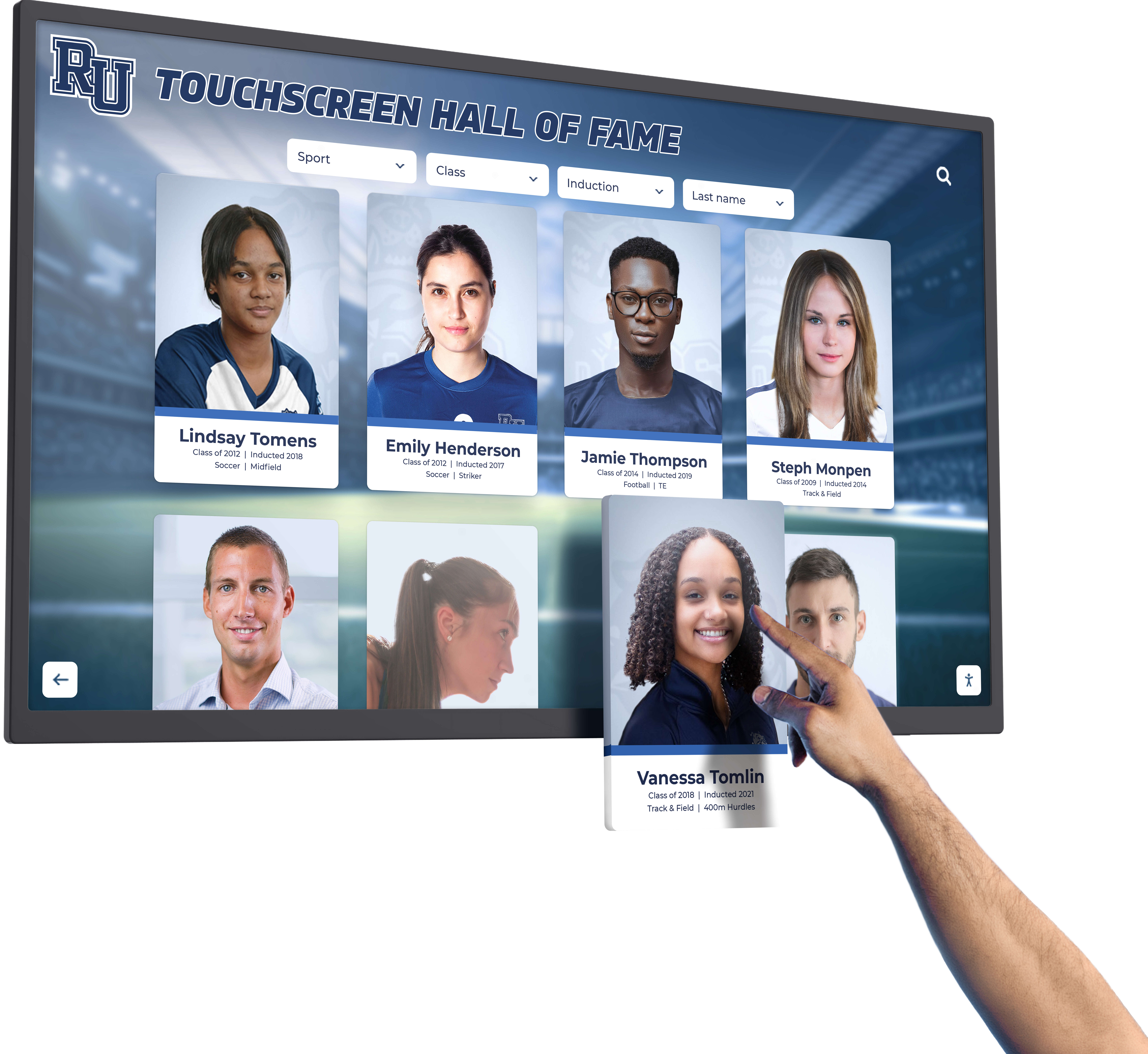
Ultra Responsive Touchscreens Retain Users: Software + Hardware
Ultra-responsive touchscreens have become the gold standard for interactive displays in schools, universities, and institutions seeking to maximize user engagement. When touchscreen hardware and software work in perfect harmony, the results are transformative: users stay engaged longer, interact more frequently, and return to these systems repeatedly.
Read More
Transforming Healthcare Donor Recognition: The Power of Touchscreen Displays
Healthcare institutions face unique challenges when it comes to donor recognition. Unlike educational institutions celebrating academic achievements, hospitals and medical facilities must honor benefactors while maintaining patient privacy and demonstrating tangible healthcare improvements. Interactive touchscreen donor recognition systems offer powerful solutions that transform traditional static plaques into engaging, dynamic displays that inspire continued giving and showcase the life-saving impact of healthcare philanthropy. Healthcare philanthropy represents one of the most impactful forms of charitable giving, with donors contributing billions annually to support medical research, facility improvements, and patient care programs. However, recognizing these contributions in ways that truly resonate with visitors, patients, and potential donors requires innovative approaches that go beyond traditional donor walls.
Read More






























